 Last week, I shared with you the fact that, though one can think that one has all things under control, the reality usually rears its ugly head and one finds out that one has NOTHING under control! My dad used to tell about a professor at the University of Kentucky, back in the 1950s, who used to quip that as soon as you think you have control over anything, just take a big rock, hold it over your foot, drop it and then WILL it to stop. That will cure you of that illusion. BUT….I also have been taught to make lemonade out of lemons, or in this case, ham and egg tostadas out of ham that I didn’t get to serve! We love these breakfast yummies and the ham that I had to can after the disaster at our son’s rehearsal dinner has come in really handy! They are wonderful for a brunch as well and look so pretty on the plate. 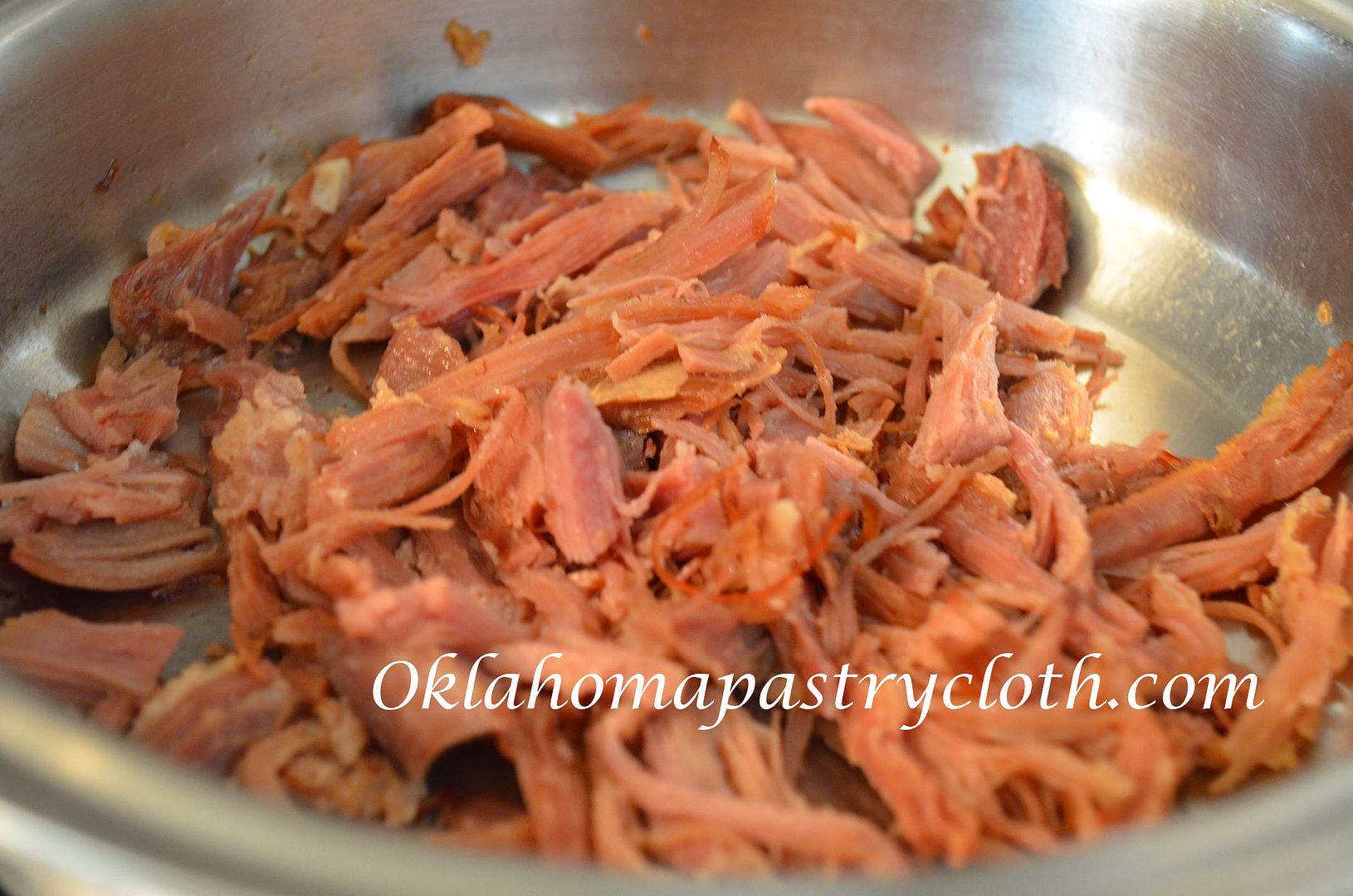 Home canned ham is wonderful for this breakfast treat, but you can used any kind of ham you like. It just needs to be shredded or chopped. Toss 1/2 cup of ham, per person, into a hot skillet that has been wiped or sprayed with a little olive oil and toss until thoroughly heated. Remove ham to a bowl or plate and place in a slightly warmed oven.  Ingredients: 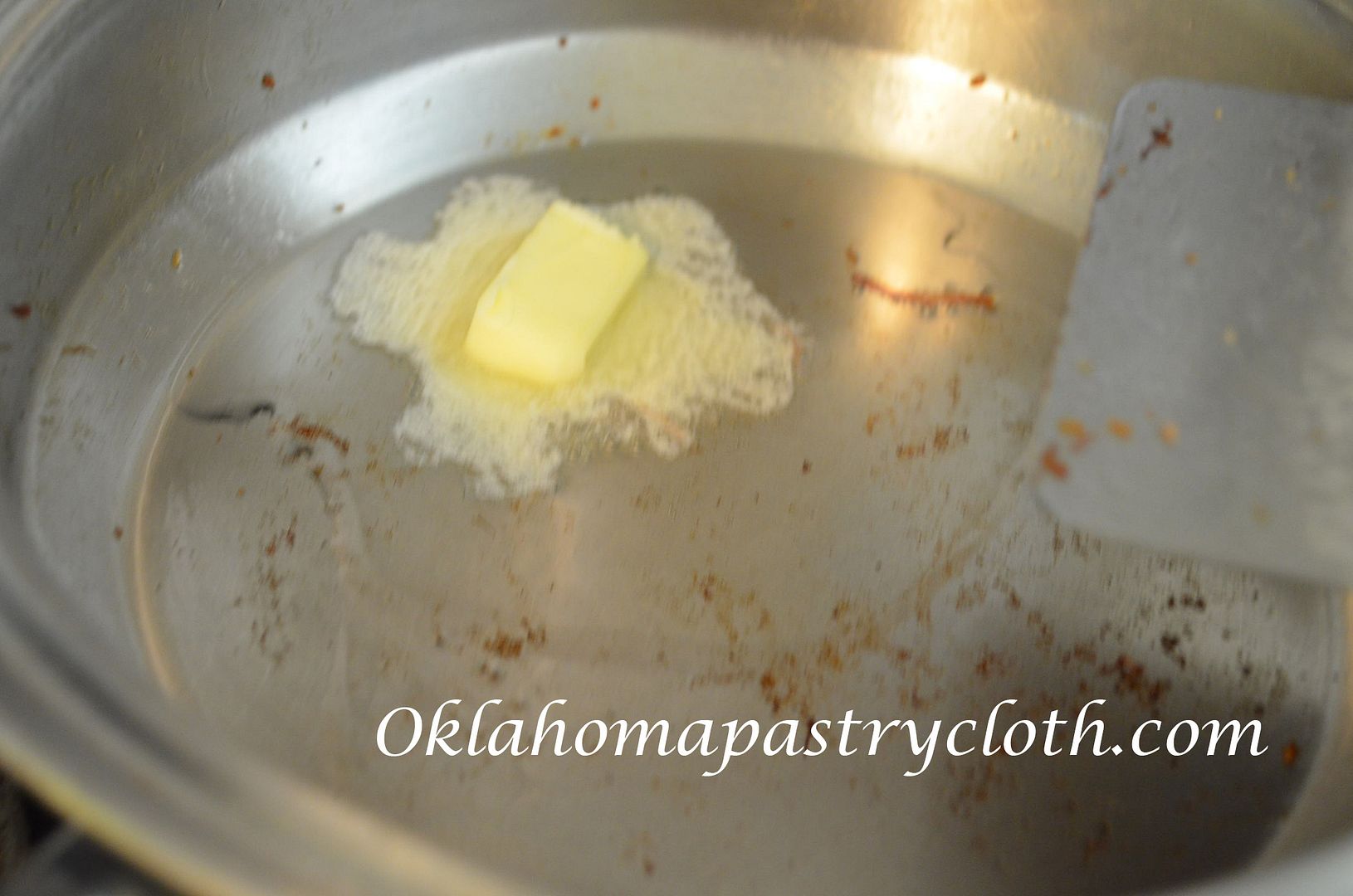 Add a tbsp. of butter and a tbsp. of olive oil to the skillet and heat until butter is melted. 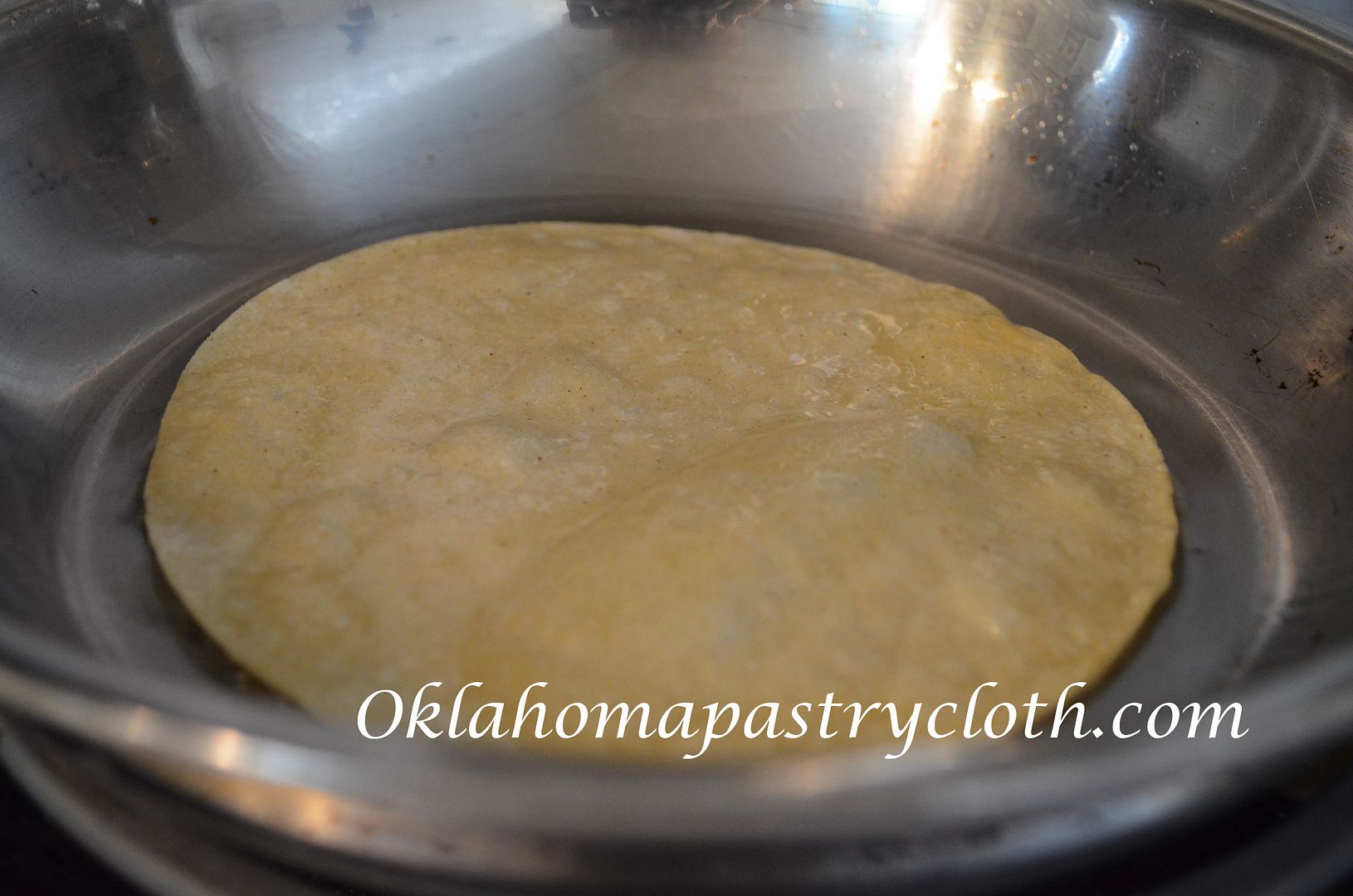 Prepare one corn tortilla per person and place into hot oil for about 30 seconds. Quickly flip and allow to cook until puffy places start appearing. Pick up with tongs and transfer to a paper towel and pat to remove excess oil. Repeat until all tortillas are cooked. You want the tortillas to be tender, not crispy. Add more oil and butter as needed. Stack on a plate and place into the warmed oven as well. 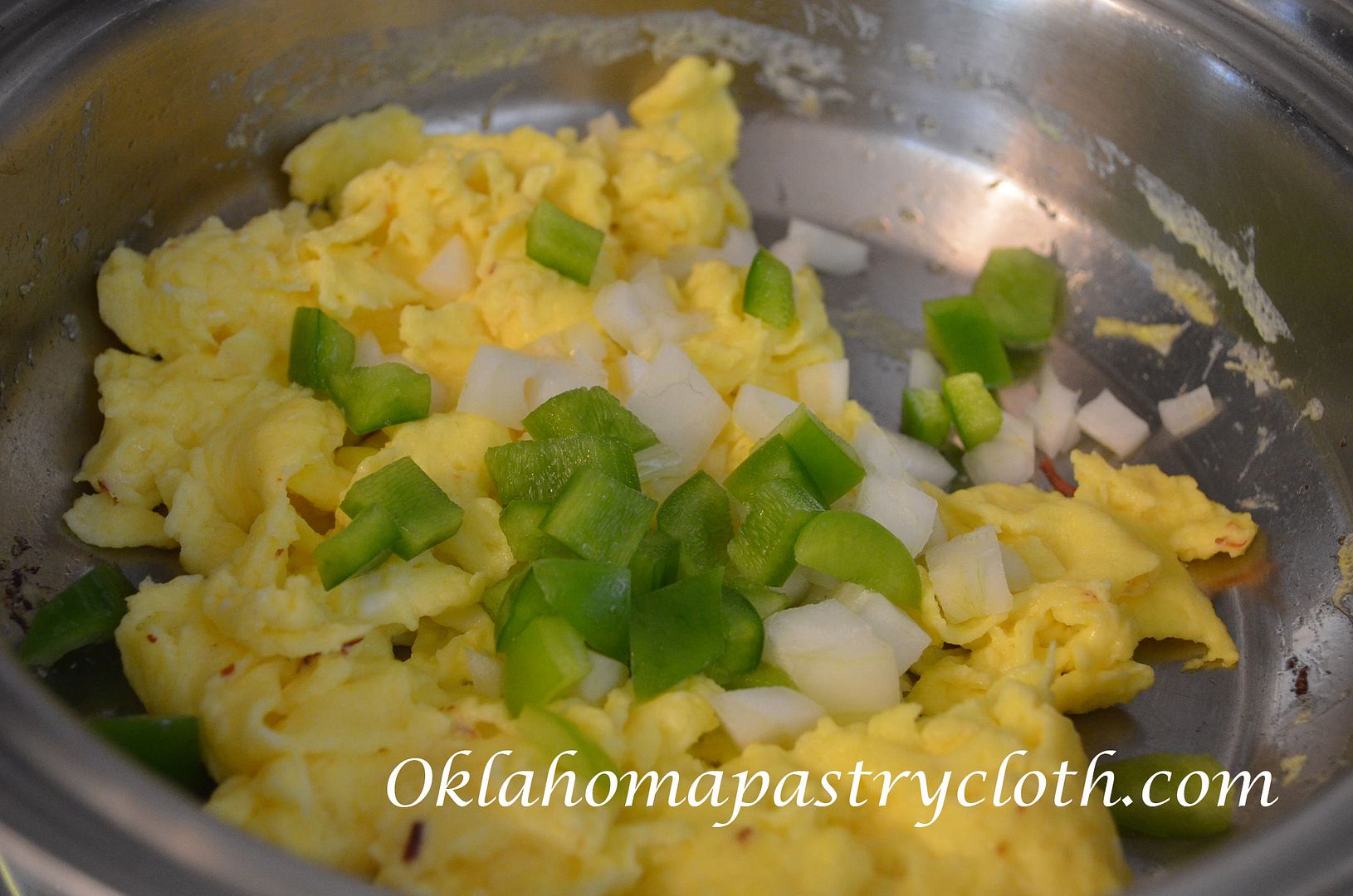 In a bowl, add one to two eggs per person with 1 tbsp. of milk per egg. Add a dash of salt and pepper and whisk until well-scrambled. In the skillet that is still hot and has the remaining oil and butter in it, add eggs and stir to cook. When about half-cooked, add onions and green peppers. Continue stirring and tossing to scramble the eggs.   On each plate, place one tortilla in the center and top with 1/2 cup of ham. Add eggs, onions and green peppers on top of the ham. Sprinkle shredded cheddar or Monterey jack cheese over the surface of the eggs. If the cheese doesn’t melt right away, microwave for a few seconds to melt it. Add freshly chopped tomatoes and picante sauce. Garnish with fresh cilantro and sour cream or guacamole if desired.  |
|
| |
|
Oklahoma Pastry Cloth™ Company on Facebook
|
|
 |
|
|
|
Archive for the ‘Canning and Food Processing’ Category
Ham and Egg Tostadas
Tuesday, July 21st, 2015
Waxing Commercial Cheese
Thursday, October 10th, 2013
   You know I can’t resist a sale, And so begins this shopping tale. I found a bargain sure to please, A dollar for a block of cheese! I purchased 12 and paid my dough. I’ve showed you how your cheese may can, I followed directions to a ‘T’ And so you see (you’ve got to get it!) No groans from the peanut gallery out there!! I can’t resist a little verse…a very little verse! I thought that I would show you, step-by-step how to preserve cheese that you find on sale. Mine has been sitting at room temperature for four months now and we are using it regularly. Mr. Fix-It likes this cheese on crackers and sandwiches because as it sits, it ages. Now it tastes like expensive, aged, sharp cheese. But first, I’d like to remind you about the giveaway going on.  Just be sure to leave a comment below in the comment section and you’ll be entered to win our fry bread mix and a package of our blueberry scones (complete with a can of real, Maine wild blueberries). The drawing will be October 18th. 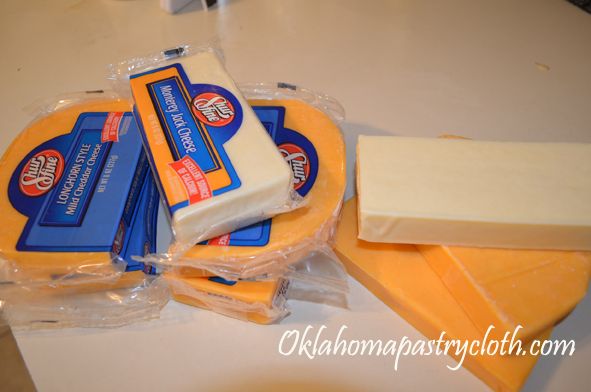  OK. Back to cheese. Any brand of cheese will work, but I happened to find the REALLY cheap kind. I grabbed mild cheddar, provolone and longhorn. All are relatively mind flavored cheeses so that when they age, they don’t become too sharp. 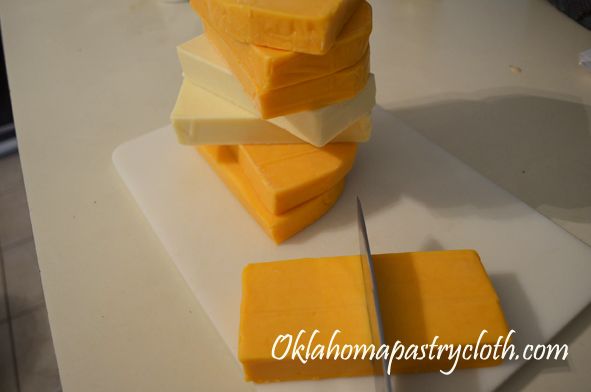 I cut the blocks in half to make 4 oz blocks for easier waxing. 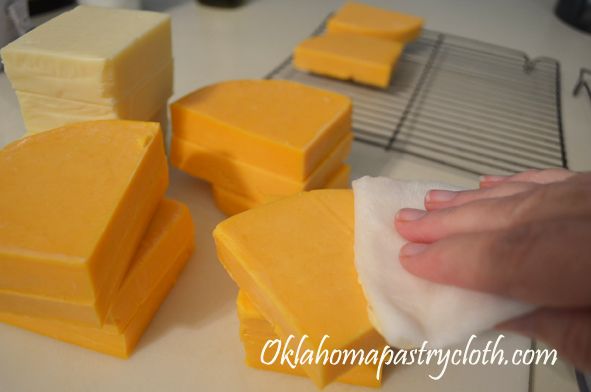 Carefully wipe each block with white vinegar to clean. If you do not have vinegar, you can use a brine mixture of 1 tsp salt to 1 cup of water. 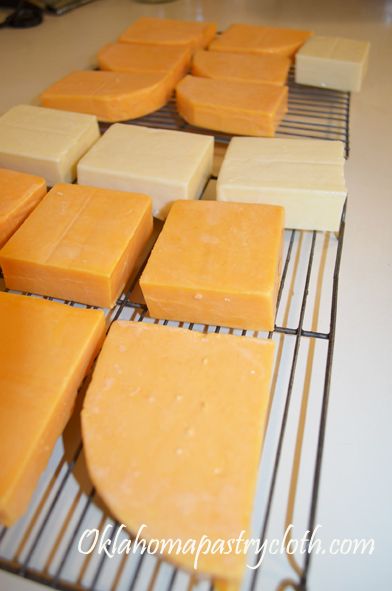 Place the cheese blocks onto cookie sheets, wax paper or paper towels and allow to dry for 48 hours. You can turn the cheese if it is not on racks. I am using metal cookie racks here, but I think that plastic racks would be better. The metal can rust or oxidize and leave lines on the cheese. I am purchasing some plastic racks for future use. 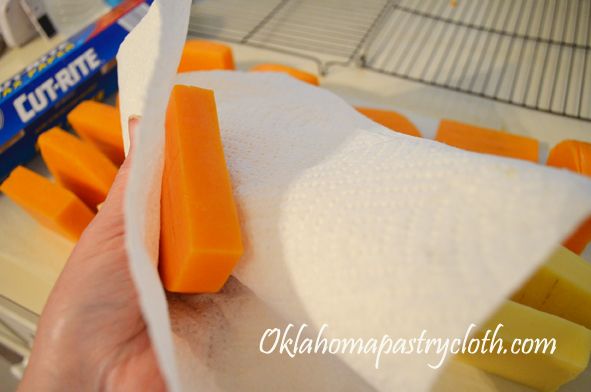 After the cheese has dried, using paper towels or cheese cloth, wipe excess oil off of each block. 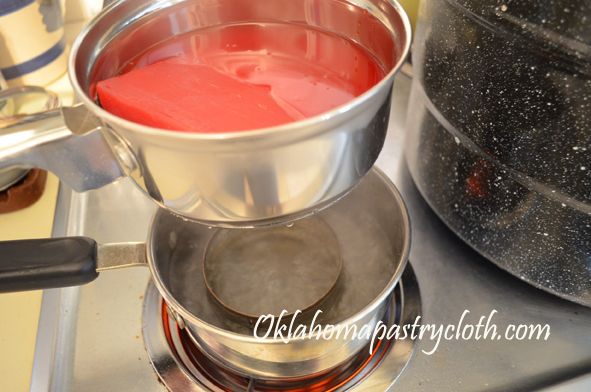 I melted the wax in a double boiler. You can purchase cheese wax online at the New England Cheese Making Supply. The wax is supposed to get as hot as possible to kill any spores and the only way to get it really hot is to put the pan directly on the stove eye on high, but that is very dangerous as the wax can catch fire or even explode. Plus, you can really get burned. So I did some research and many people are using a double boiler and getting it hot with boiling water beneath it. It is the safest way and seems to work fine. You can make a double boiler, if you don’t have one, by placing an empty tuna can in the bottom of a sauce pan, filling the pan with water and then placing a smaller pan onto the tuna can to keep it from dropping down into the first pan. 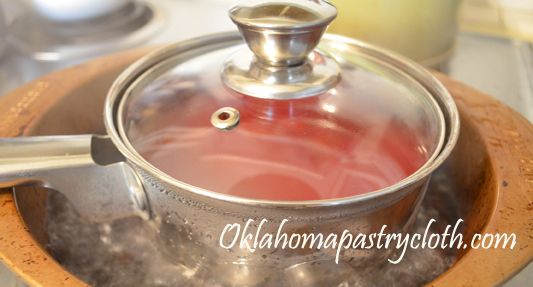 Or, you can use an old cake pan, fill it with water and set your pot into the water. By the way, I went to our local Big Lots and bought this sauce pan for $3. I just keep the wax in it and let it harden after melting to use the next time, adding more as I need. To store, I keep the lid on it so that no dirt gets inside. 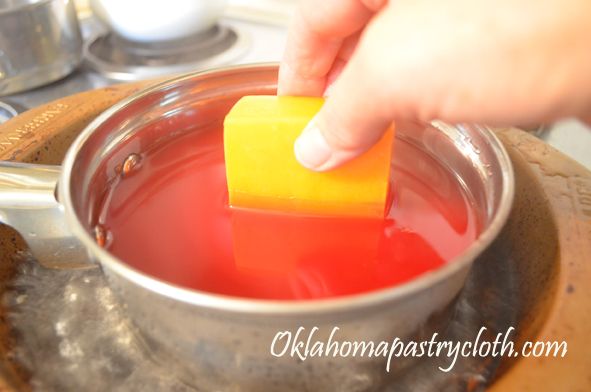 When the wax is hot to almost boiling or is boiling, dip one end of each of your cheese blocks into the wax to halfway up. 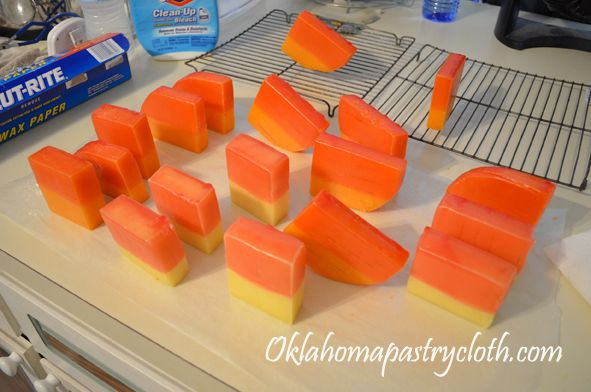 Turn the blocks to the undipped sides and let them rest to harden 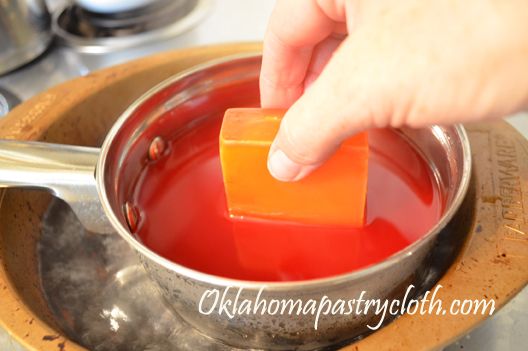 It only takes about a minute for the wax to harden where you can touch it. Pick the cheese up by the wax end and dip the unwaxed end. Place the block onto the end with the hardened wax so that the new wax can harden. Continue this process until you have waxed each end four to five times. 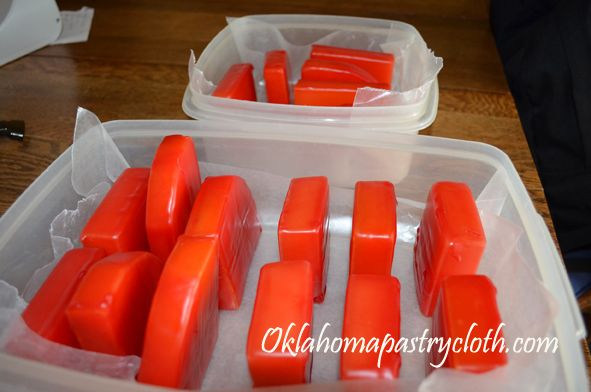 Place the waxed cheese in a container and into a room that is dark and cool or into a pantry where it can be easily accessed. Every few days, turn the cheese to a different side. Sometimes, the cheese will weep oil or water. It is still ok to use. I found that storing it on paper towels or cheese cloth helped absorb any weeping. Also, in some cases, the wax will thin and so you will need to wipe it clean and dip the block a couple of more times. If you see a dark patch under the wax, it is probably mold which is the result of a pin sized hole or other disturbance of the wax surface. You can use that cheese immediately, washing it and cutting off the molded part. 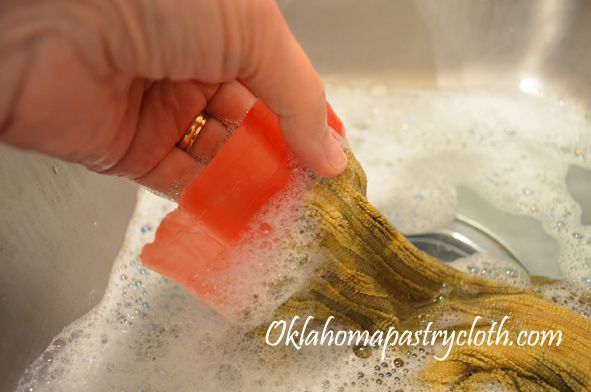 When you decide to use a block, use a knife to pry one end of wax off of the cheese. The rest just lifts off. Wash the wax in hot, soapy water and be sure that any pieces of cheese and oil are removed. Put the wax into your wax pan to reuse on your next batch. 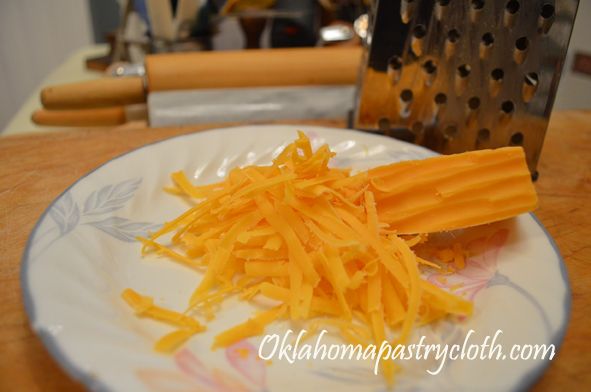 The cheese can be grated 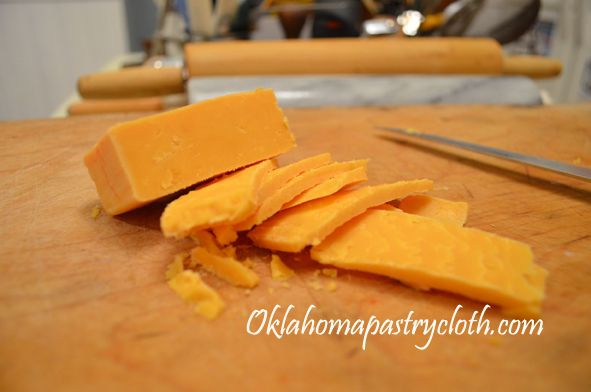 It can also be sliced or cut into cubes. Because it is sharper, it is also drier. So there you go!! Now you can wax poetic too….and if you want to send me your poems, I put them up at the blog! 🙂 Don’t forget to leave a comment to enter the giveaway!   |
|
| |
|
Oklahoma Pastry Cloth™ Company on Facebook
|
|
 |
|

|
A Winner, A New Give Away and A New Recipe for Your Canned Meats!
Thursday, August 8th, 2013
 On August 1st, we drew a name out of the hat and Frankie, from Silver Spring, Maryland, won the gift certificate to the Grangeville Rose Tea Room and Emporium. The gift certificate has been mailed to her sister, who lives right here in Oklahoma City, as an early birthday present. Lucky her!! And so, another Okie will get to experience the lovely atmosphere of our newest tea room. Congratulations Frankie and sister, Liz. And thank you to all who entered the drawing. 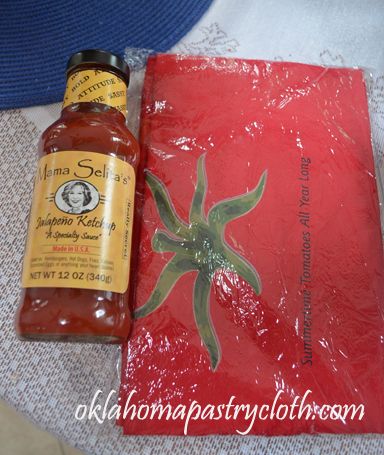  Now, we have a new giveaway. Red Gold Tomatoes, the best canned tomatoes in the world (if you can’t do your own!!) has sent me a couple of items that I thought I would give away to a lucky reader. On August 21st, we will be giving away this Red Gold Apron and a bottle of their Mama Selita’s Jalopeno Ketchup. Just comment at the blog and you will be entered. Plus, Red Gold Tomatoes is having their own celebration. I will post here exactly what my letter from them says: Now, we have a new giveaway. Red Gold Tomatoes, the best canned tomatoes in the world (if you can’t do your own!!) has sent me a couple of items that I thought I would give away to a lucky reader. On August 21st, we will be giving away this Red Gold Apron and a bottle of their Mama Selita’s Jalopeno Ketchup. Just comment at the blog and you will be entered. Plus, Red Gold Tomatoes is having their own celebration. I will post here exactly what my letter from them says:“Come join our Red Gold Summer Grillin’ Party that will run from July 24th through August 30th on Facebook — #RGParty. During this period, we will share our new RG Tomato Grillers Recipes. They are tomato-licious!…As part of this promotion, we will be giving away 1,000 Red Gold “Summertime Tomatoes All Year Long” Aprons every week via a random drawing – that’s 5,000 total winners! There will also be one grand prize winner who will win a large Big Green Egg Grill – that’s a $1,000 value. Anyone who registers for our promotion is automatically entered into both the weekly drawing and grand prize drawing. Here’sthe twist – anyone can earn additional entries into ourgrand prize drawing! For each person they refer, who opts to participate in our promotion they will earn additional entries int the grand prize drawing. Our goal is to have 150K Red Gold Facebook Fans by the end of the summer. Each week we will be releasing new recipe videos, as well as sharing summer grilling tips.” You can also find them on Pinterest at www.pinterest.com/RedGoldTomatoes And by the way, Red Gold is an Indiana based, 3rd generation Family-Owned company that has been making premium quality tomato products since 1942!! We need to support small businesses!! 🙂 Now, on to cooking….in the past, I have shown how to can meats like chicken breasts, ground beef, sausage and etc. I even can my own chili, a recipe that I am not at liberty to share because it is not my own. However, my point is that meat is an easy staple to put up for long-term storage much longer than freezer times. Many of these meats can be bought as well, canned, off of the grocery shelf, but sometimes we are at a loss what to do with them. Here, I am going to show you a quick way to make enchiladas with your canned chicken breasts, canned chili or canned roast beef. You can even use your canned cheeses and dehydrated onions, rehydrated with water. You will need for 4 people: 8 – 10 White corn tortillas (yellow corn are fine but I like the lighter texture of the white corn tortillas) Olive Oil 1 pint canned, boneless chicken breasts 1 pint canned chili or canned roast beef 1 package taco seasoning mix (I prefer Taco Bell) 1 8 oz sour cream (light is fine) Buttermilk 1 cup shredded Monterey jack cheese 1 cup shredded Cheddar Cheese (you can use your canned cheddar) 2 slices American Cheese (You can use your canned Velveeta) 1 small onion chopped 2 tbsp. chopped green pepper 1/2 tsp garlic powder salt 1 jar salsa verde 1 can red enchilada sauce (not picante sauce)  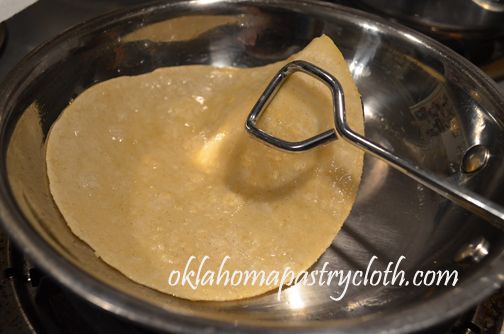 Place canned chicken breast with broth into a small sauce pan and add 1/2 pkg of taco seasoning. Stir until chicken is shredded and mixed with seasoning. Add a little water or broth if the meat is too dry. Simmer until liquid is reduced to a thick sauce. Set aside. Put 2-3 tablespoons of olive oil into a skillet and heat. Place one tortilla at a time into the hot oil and sear lightly. Turn and lift out to a paper towel to drain. Do each tortilla, placing a paper towel between each one.  Place a line of hot, seasoned chicken mix down the center of each tortilla. Roll tightly and place on a microwaveable platter, seam side down. Repeat until desired number of chicken enchiladas is achieved. 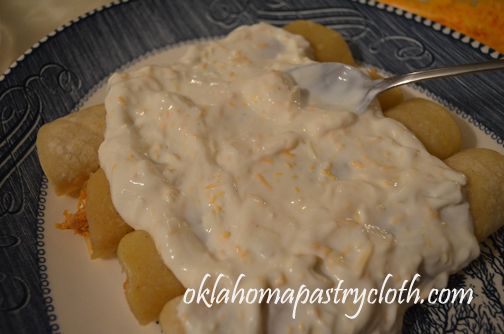 In a bowl, add sour cream, chopped onions, chopped green peppers, garlic powder, 1/2 cup Monterey jack cheese and salt to taste. Stir and add just enough buttermilk to make a nice, thick sauce. Spread the sour cream sauce over the chicken enchiladas, evenly.  Spoon salsa verde down the center of the enchiladas. 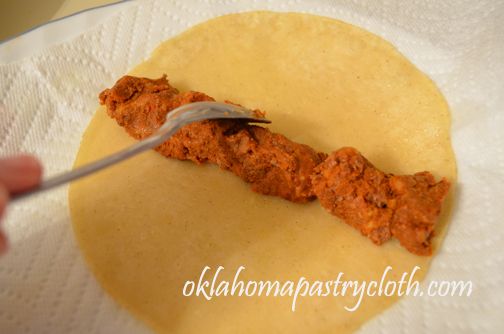 Now, with remaining tortillas, (here I am just making two for the two of us but you can make more) we will make beef enchiladas. If using canned beef, do the same as with the chicken breasts and place into a pan with the broth and 1/2 pkg of taco seasoning, simmering until hot and liquid is reduced. If using your canned chili, heat it first, cooking it down to very thick and then spoon onto the tortillas. Roll the tortillas tightly and place onto the platter with seam side down.  Slice the American cheese into strips and lay the strips down the tops of the enchiladas. Sprinkle with a mixture of the cheddar and Monterey jack cheeses and then spoon red enchilada sauce over the top of the cheese. 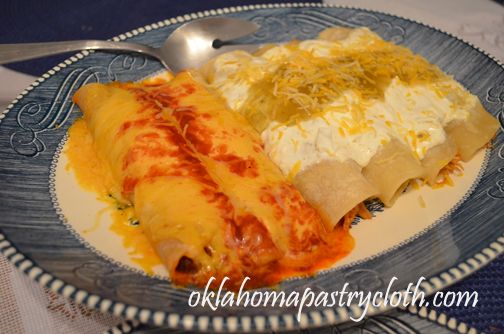 Microwave the enchiladas a length of time according to your microwave’s power level (you can carefully cover these with foil, making the foil stand up away from the enchiladas and heat in the oven) I usually microwave about 2 minutes or until the cheese is melted and sour cream sauce is hot. Remove from the microwave and sprinkle a mixture of cheddar and Monterey jack cheeses over the chicken enchiladas.  Serve with Mexican rice and refried beans and you’ll think you are at a restaurant!  |
|
| |
|
Oklahoma Pastry Cloth™ Company on Facebook
|
|
 |
|

|
Canning Ground Meat
Thursday, June 20th, 2013
  Being without electricity during the tornadoes made me appreciate canned goods all the more. Once we got the generator going, things got easier, but so much of life was topsy-turvy with the destruction, mess and time demands that canned items were a blessed relief for cooking meals. My canned hamburger came in especially handy. Canned hamburger is amazing for whipping up tacos or nachos, Sloppy Joes, spaghetti, soups, casseroles and anything else that requires ground beef. It is already cooked, ready for spices and seasoning and cuts any recipe time in half. I also cook sausage loose (not in patties) to use on pizza and can the very same way. Either one is great. We are very fortunate here to have a store called CHEFS that provides bulk purchase of just about anything you could want. Ground beef comes in 10 lb chubs for much, much cheaper than at a normal grocery store. And the meat is very high quality, less fat and ground fine. I buy several of these chubs and process the meat, winding up with around 10 pints of cooked, ground meat ready for a quick meal. 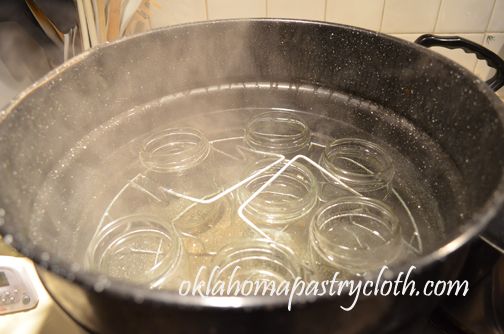 To make sure that my jars are sterile, I use a waterbath canner to boil them in water that completely covers. 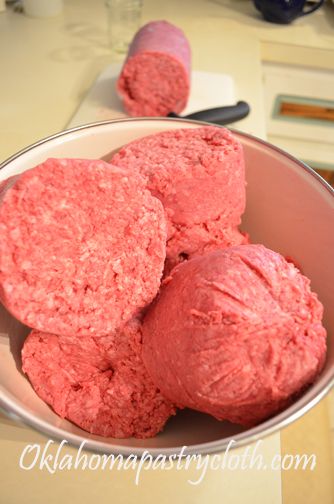 Meanwhile, I cut the chubs into approximately one pound chunks and put them in a large bowl. 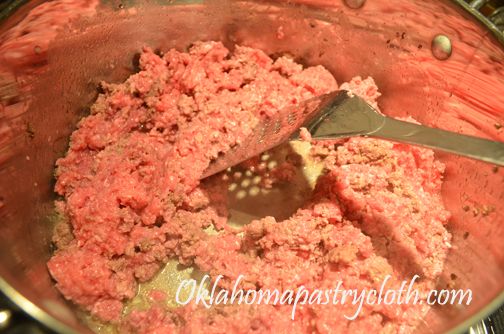 In a large pot, I brown the hamburger a little at a time, adding about a pound at a time, until most of the ground beef is browned. It does not have to be cooked all the way through. That will continue in the processing.  When all of the hamburger is lightly browned, a small amount at a time goes into a colander that is placed inside a large bowl. The grease is drained this way so that the meat is nice and dry and non-greasy. I place the drained hamburger in the jars and then put a little more meat into the colander to drain and so on. 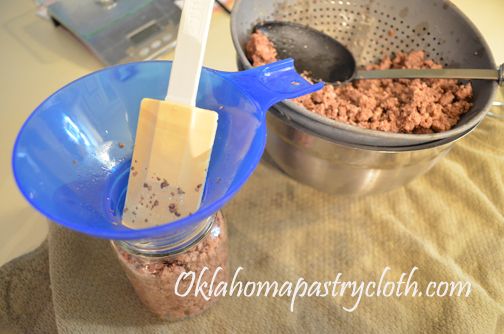 Using a canning funnel, the meat is placed into jars. I use pint jars because I can figure right at a pound of meat (weight before it was cooked) per jar and that makes it easy for use in recipes. The hamburger is packed down pretty tightly by using a spatula or wooden spoon to tamp it between additions. The jars are filled to 3/4″ – 1/2″ headspace. 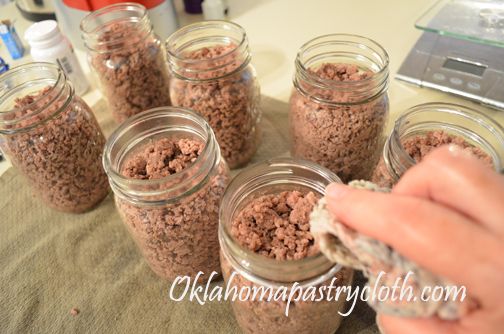 The rims of the jars are wiped with a warm, wet cloth to remove any oils. 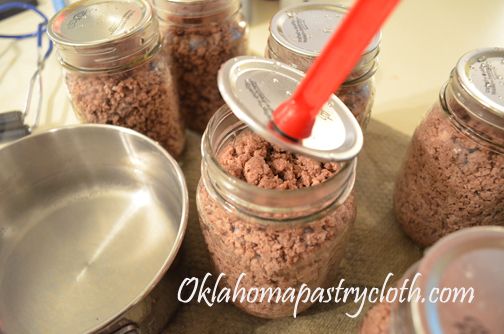 Lids that have been warming in nearly boiling water are applied.  The rings are tightened and then loosened back a little less than 1/4 turn 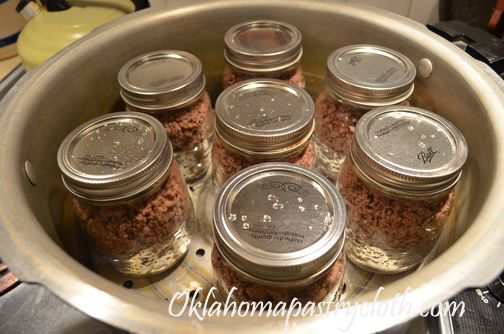 The jars are processed in a pressure canner for 90 minutes for pints and quarts. 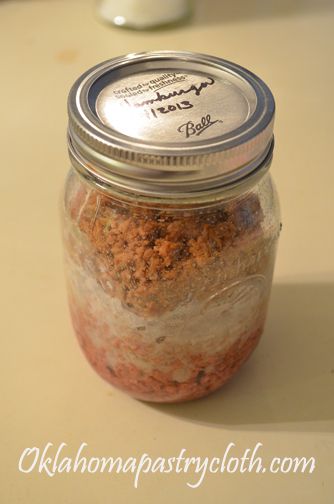  When the jars cool, a little fat will show up that is extracted in the processing. To use, just open a jar and pour it into a pan, brown a little bit and add seasonings or sauces for your favorite recipe. Or for pizza, just brown a little, add salt and pepper and sprinkle on pizza. You can do the same thing with your canned loose sausage.  |
|
| |
|
Oklahoma Pastry Cloth™ Company on Facebook
|
|
 |
|
|
|
Getting Down To Business: A New Give Away!
Monday, April 1st, 2013
  Everything is back to normal. We’re back to work and all WAS going well until the big press died. Now, it is lying in pieces, looking like a destroyed robot from Star Wars. Mr. Fix-It is doing the surgery but a thermonuclear discombobulator is needed and the only one that could be found must be ordered from…where else?…China. Actually, it is called a heat resistor thingy. Evidently, it’s an important thingy, too. Ah, technology! We have had a number of emails just recently, dealing with the subject of shipping. Personally, shipping is the bane of my existence. I wish that we could ship everything to everyone for free. But alas, I don’t do the lottery and haven’t won any millions so we can’t afford to give away the farm. Shipping expense is a reality with which Creating Concepts, Enterprises must deal. And on top of everything, unfortunately for all of us, shipping costs have gone up. We do not use UPS or FedEx because their charges for the size shipments we send out are ridiculous. In fact, their charge can be as much as $15 over what the US Postal Service charges us. And so, we use the US Postal Service Priority method almost exclusively. For international orders, First Class is used. First Class packaging is not available for the states. Everything is done by weight and for online orders, PayPal does its best to estimate as close as possible to accurate shipping charges. Sometimes, it misses the boat and nearly always it goes against us rather than the customer. In fact, we were rather sick awhile back when an order to Australia was estimated at $11 by PayPal and the actual shipping cost us $22.50. Not good. The fact is, shipping is high. Phone orders are more of an exact science for us because as soon as an order is processed and ready to ship, the customer credit card is charged with the exact amount on the shipping label. If you plan to order, doing so with a credit card by phone at 405-275-5639 will be the most accurate route. I, personally, feel badly when someone is unhappy with a shipping cost that they perceive is too high. A larger Oklahoma Pastry Cloth™ or multiple pastry cloths can be heavy and so cost more to ship. The mixes add up in weight as well. It doesn’t matter what box or bubble mailer is used, the weight is still the same, the location is assessed and the price goes up accordingly. Our Oklahoma Pastry Cloth™ is made of a heavy weight cotton, unlike the cheaper, lighter brands, so that it will last for years and years. It is not meant to be a throw away item but is meant to be a family treasure. So hopefully, this will better explain our shipping policy. I understand the groan of financial agony when a customer sees that shipping charge. It seems too high. But in order to use the US Postal Service, we have to pay the price – their price. We appreciate your understanding. 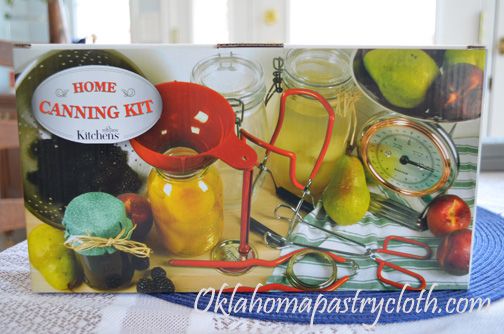  It’s time for another giveaway! And this is no April Fools joke. Since canning season is just around the corner, we are giving away a nice set of canning tools ready to be used! Starting today, leave a comment on any of the blog posts and you will be entered. If you have never posted at the blog before, don’t worry if your comment does not show up immediately. New posts must be approved by the moderator and then your post can be seen. The drawing will be two weeks from now on April the 15th – TAX DAY! Yayyyy. Good luck to everybody!!  |
|
| |
|
Oklahoma Pastry Cloth™ Company on Facebook
|
|
 |
|
|
|
How To Freezer Wrap Meat Like the Professionals
Friday, October 12th, 2012
 Today, we cooks have all kinds of new products to process the various meats that we love to store in the freezer. Electronic sealers, zippered freezer bags and machines that vacuum pack into plastic bags can be costly and, though they promise no freezer burn, often times, the frost and freezer burn still appear. I love my FoodSaver Vacuum sealing system, but I have to say, the tried and true wrapping in freezer paper, like I did at my job in the meat department many years ago, still seems to be the best way to preserve food in the freezer. In fact, if you really want to preserve your meats, you can vacuum pack them and THEN wrap them in freezer paper. I continue to wrap most of my meats in the wax coated freezer paper that can be found at any store. It comes in a large roll that is found in the same grocery section with the plastic wrap and aluminum foil and wax paper. The most common brand is Reynolds. I thought that I would show you how I have wrapped my meats for the past 35 years, having cut and packaged meat professionally after graduating college. (An art degree just didn’t put food on the table – let alone wrap it!!! ) What you need: Roll of freezer Paper Freezer tape or Masking tape Sharpie for labeling 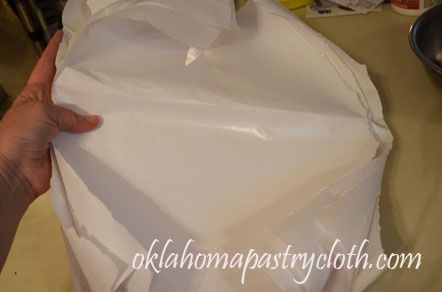 Cut paper to at least 6″ wider than the object that is going to be wrapped. If you are doing large steaks, use two thicknesses of wax paper to place between the steaks. If you are wrapping small steaks or pork chops, chicken breasts, etc, lay the meat side-by-side with large end of the first piece of meat next to the small end of the second piece of meat. The freezer paper should be at least 6″ wider than the width of the two together. 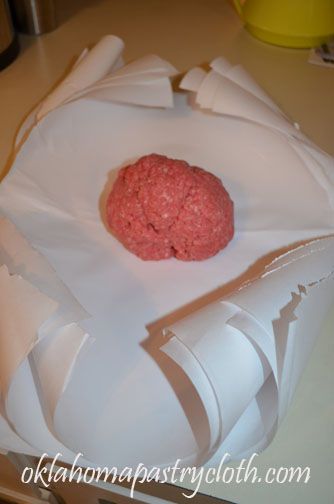 Place the meat in the center of the paper. Here, I am wrapping one pound balls of ground beef. 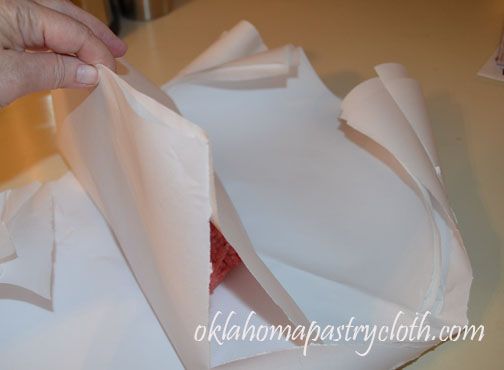 Pull uncut ends of the paper up between fingers and match the edges so that they are equal and even. 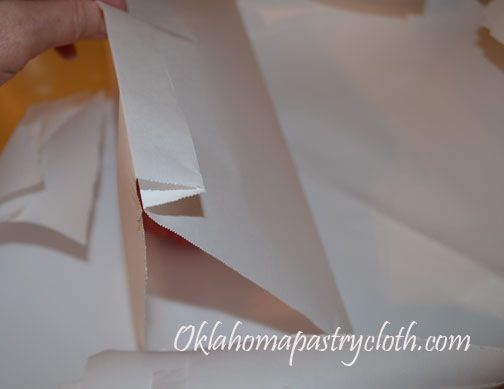 Fold over and slide fingers across the crease to make flat and crisp 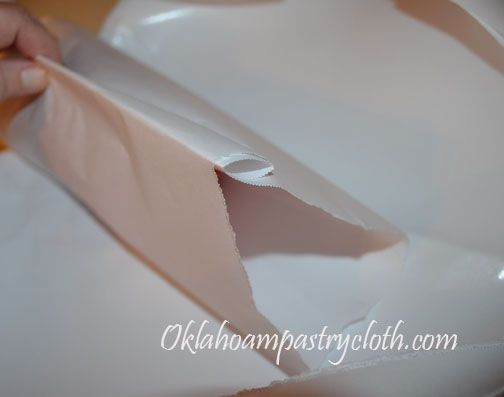 Continue folding and creasing over and over until your fingers are stopped by the meat inside the package 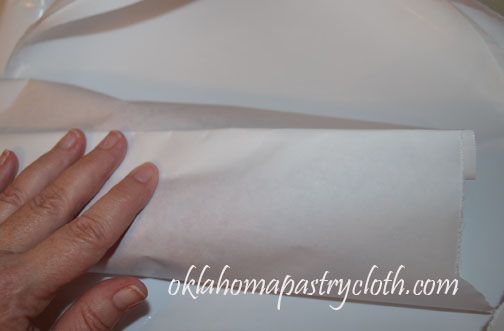 Press the flattened roll to the top of the package to make a flat seam 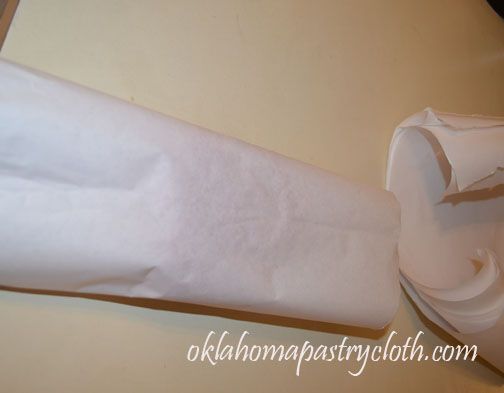 Turn package over to seam side down  Press finger tips into the end of the package to force down the top paper into the bottom, as done when wrapping a present 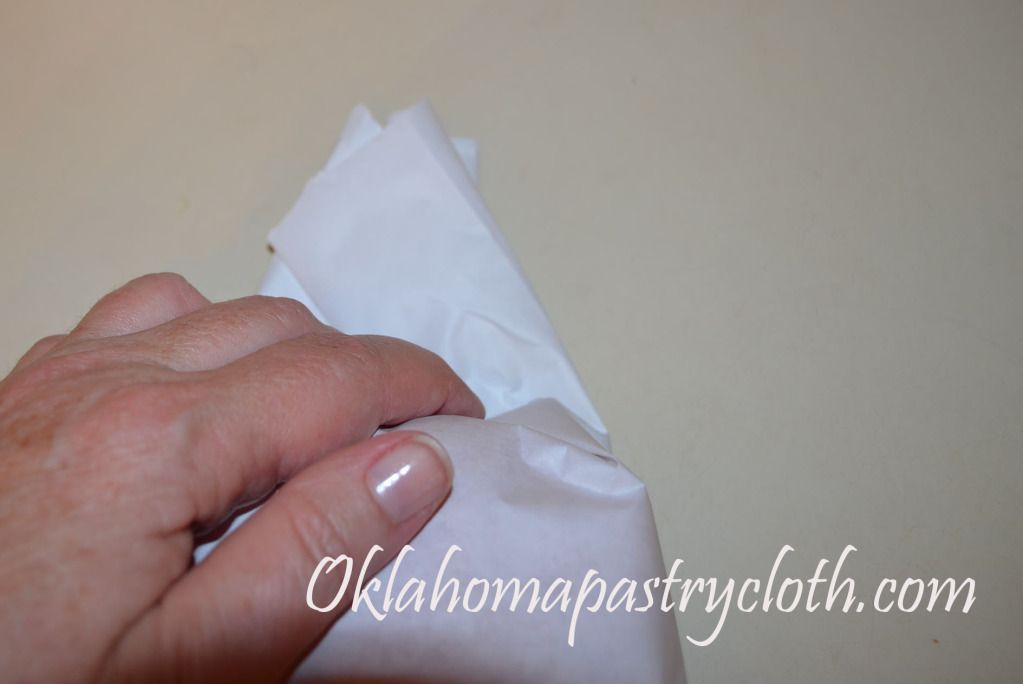 As in wrapping a present, fold the edges over to a point 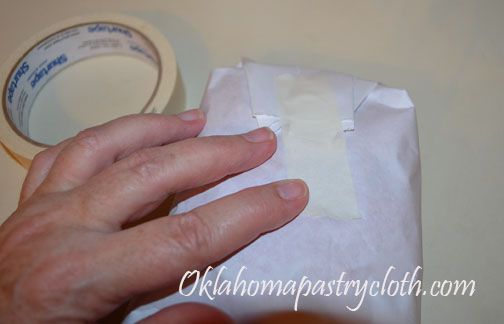 Pull pointed end over to the back of the package and tape. Repeat process for the other end of the package  Turn the package over to the seam end and write the date and what type of meat has been wrapped.  Stack packaged meat and then carry to the freezer. Lay meats into the freezer in layers of one to two packages deep on several shelves until they are completely frozen. Stacking too much unfrozen meat into one area of the freezer keeps flash freezing from occuring and can make the packages freeze unevenly. Once frozen, you can move and stack them however deep you wish.  |
|
| |
|
Oklahoma Pastry Cloth™ Company on Facebook
|
|
 |
|
|
|
Dried Ears
Tuesday, July 31st, 2012
 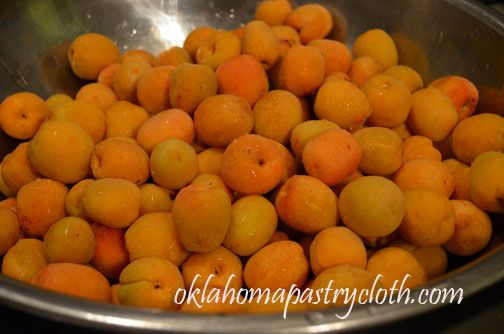 Well, it appears that my internet is totally hosed for who-knows-how-long. It has been down and I have waited patiently for a reawakening, only to find out that the company is down all the way into Kansas!! Somebody cut a cable. Dear Mr. Fix-It got me hooked into a mobile unit and so I get to write a really fast post!! Today, the subject is “Apricots”. Growing up, I loved dried apricots. We kids would get a bag and devour them instead of candy. I still love them today and I still call them what we used to call them, “Dried Ears”. Seeing my cousin recently, she affirmed that THEY call them dried ears as well! You can’t deny that dried apricots look like something some faraway, cannibal tribe collected from unsuspecting captives, not to mention that which Van Gogh sent to his lady love. OK, so now I’ve really made them appetizing, eh? Apricots are a member of the same family as peaches, plums, apples and pears but are most closely associated with plums. They grew wild in China as long ago as 2000 BC and it was the Chinese, through the silk and spice trade, that brought the fruit to the Middle East and Mediterranean countries. Romans made the apricot trees part of their culture around 100 BC as did the Greeks who called them, “the golden eggs of the sun”. By the Middle Ages, apricots were being cultivated throughout Europe. The Spanish brought the fruit trees to the New World, first planting in Mexico and later in what is today’s California, which is the leading producer in our country today. Because of our climate in Oklahoma, apricot trees produce quite well and quite prolifically. If you remember from the past post on the bunnies, Sir Flying Ace’s dog found those bunnies in an underground nest beneath his apricot tree. Last month, I joyfully emptied that tree of as many of the jewels as I could reach and then Sir Flying Ace brought me another sack that he had gathered. Mr. Fix-It and I have a young apricot tree, but it will not be ready to produce for another two years. From Sir Flying Ace, I got enough apricots to make some amazing jam, some baby food for the grandbaby and a goodly amount of dehydrated halves for snacks and dried apricot fried pies. I thought I’d give a few pictures of what that included. Apricot Jam 5 exact cups diced fruit (about 3-1/2 lb. fully ripe apricots) 1/4 cup fresh lemon juice 7 cups sugar, measured exactly into a separate bowl 1 box SURE-JELL Fruit Pectin 1/2tsp. butter or margarine 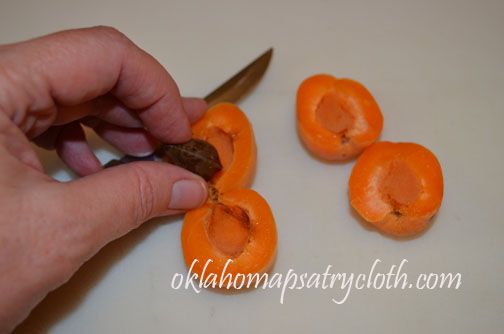 Apricots are easy, easy to prepare. They are used – minus the pit – skin and all. All you have to do is make a cut all the way around the fruit, to the pit, and then pull the halves away to lift out the pit. The pit doesn’t even stick.  I use a food processor to chop my apricots. I use the pulse feature so that I don’t liquify them and make the pieces too small. 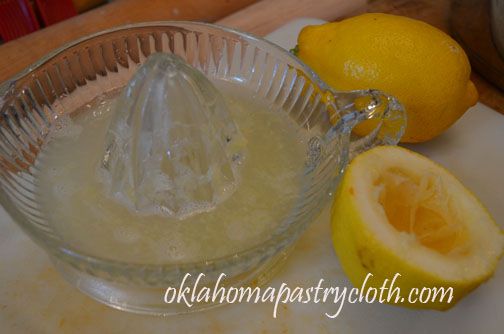 The chopped apricots are put into a large pot with lemon juice and the SureJel is sprinkled onto the fruit and stirred in until well dissolved. The butter is then added to keep frothing down.  On medium-high to high heat, the fruit is brought to a rolling boil. At this point, the sugar is added consistently and quickly as you stir. I use a wire whisk to stir the jam as I pour in the sugar. It is important to have the sugar measured out ahead of time because you will not have time to do that once the fruit has started boiling. Anyway, once the sugar is stirred in well, bring the jam back to a rolling boil and boil for one minute. 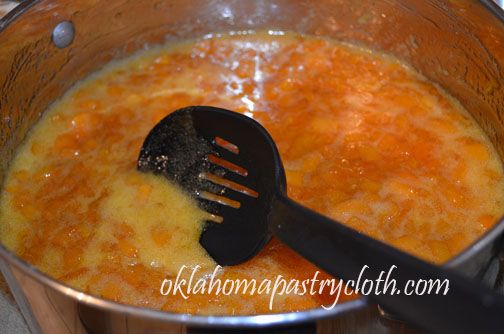 After one minute of boiling, remove the pot from heat and skim any froth off of the top with a spoon. You can put the froth into a bowl and use for jam yourself. Removing the froth just makes the jars prettier. 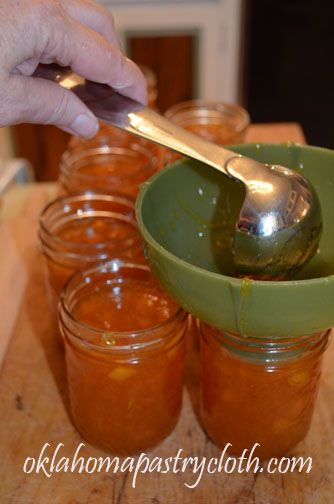 Ladle the hot jam into sterilized jelly jars to 1/2″ head space. 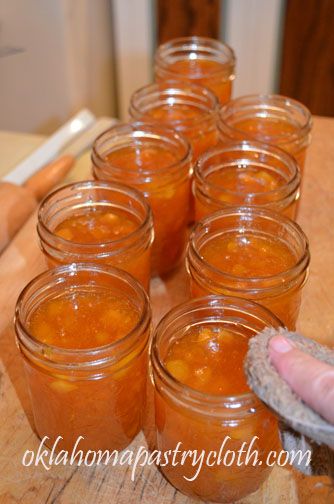 Wipe rims of jars with a warm, wet cloth to remove any drips or oils from your hands. 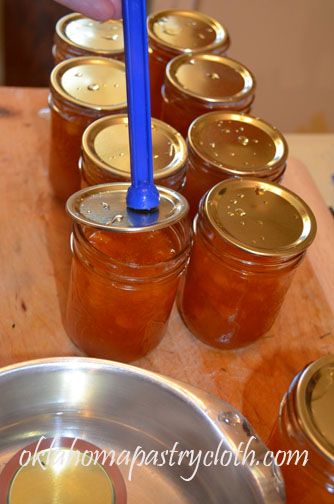 Place lids that have been warming in hot water onto the jars. Add rings and tighten and then back them off a smidge. 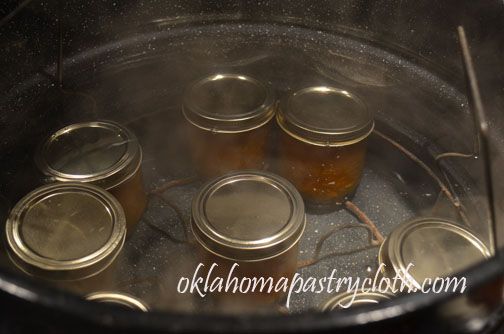 Place in a waterbath canner of warm water and process for 15 minutes. 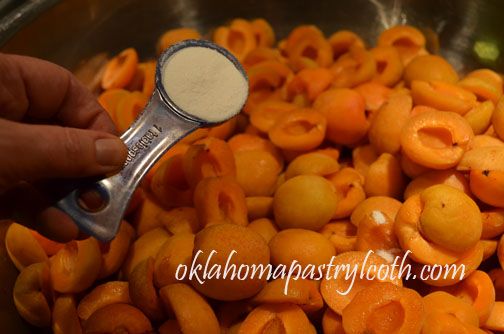 I also dehydrated a bunch of apricot halves. First, I cut the halves into a very large bowl and tossed them with a couple of tablespoons of Fruit Fresh. The apricots are not skinned.  I then toss about 1/2 cup of sugar into approximately two gallons of apricot halves because I like for there to be a little bit of a glaze when they are dried.  The halves are placed on the dehydrator trays. The trays have been sprayed with olive oil to keep the apricots from sticking. 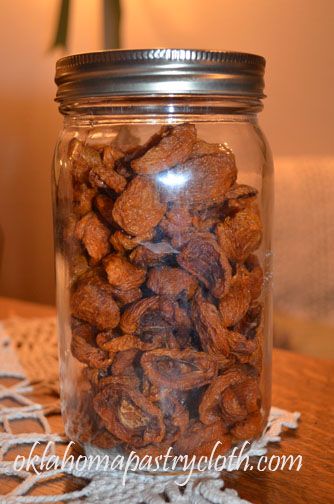 I store the dried apricots in quart jars that have been vacuum sealed with a FoodSaver.  |
|
| |
|
Oklahoma Pastry Cloth™ Company on Facebook
|
|
 |
|
|
|
Canning For Baby
Monday, July 2nd, 2012
 The fruit overfloweth. Oh my. I have been covered up with apples, peaches, apricots and peacherines. The apricots came first and those went into jam and dried apricots. Then came the apples. These are my apples from our Lodi tree which are only good for apple butter, applesauce and apple juice. So, I made apple butter first, and had help from my daughter. Next, I made applesauce and half of that went into babyfood applesauce which I canned for my little granddaughter. You should see how she eats it, smacking her lips and licking every last drop. She loves her applesauce. 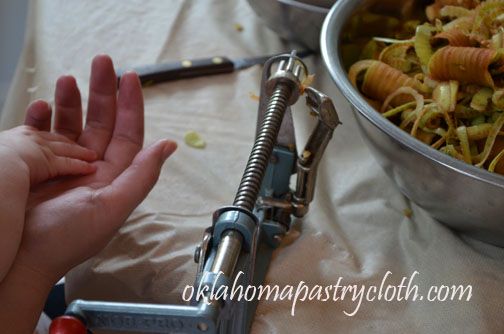 I have been making baby food since my children were little and it is a joy for me to have the opportunity to help my daughter in that preparation, now. We both make foods that are frozen and I do the canning for some so that there will be plenty of food in the waiting. Apricots, peaches and applesauce make up these, so far, because our Little Bit is just starting to eat solid food. No meats yet – just fruits, cereal, sweet potatoes, green beans, brocolli and squash. So, I thought that I would show you new mothers out there, what I do with apples and other fruits. 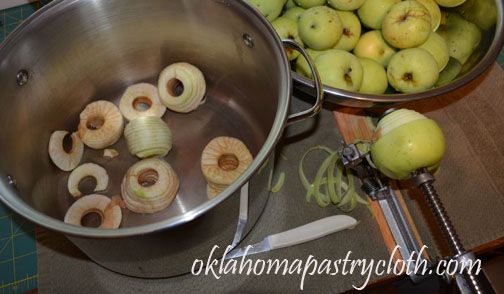 Wash and peel fruit and place in a large stock pot. 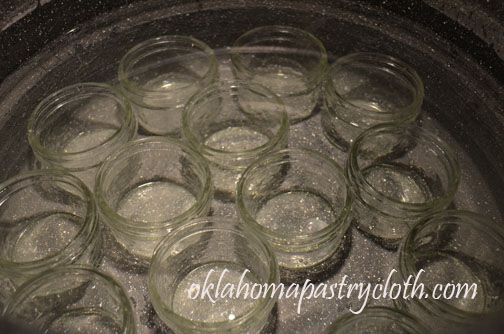 Sterilize jars, boiling in a large pot or by running through the sanitize cycle in the dishwasher 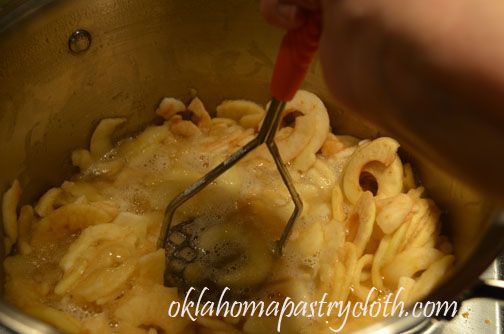 Simmer fruit over medium heat and press with a potato masher. 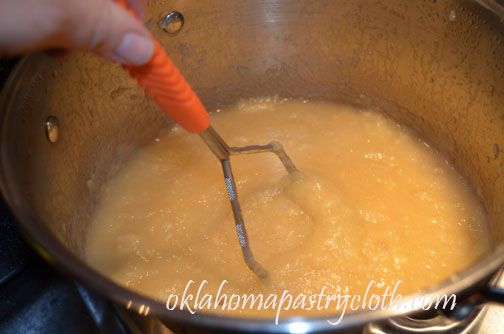 Mash until a pulpy sauce. This is for fruits like peaches, plums, apples, apricots, etc. Veggies, like green beans, brocolli, sweet potatoes and squash are cooked in water until they are soft and then pureed. (Bananas are just mashed without the cooking.) When pulp is pretty uniform, bring that to almost a boil and hold it there for 5 minutes to pasteurize. 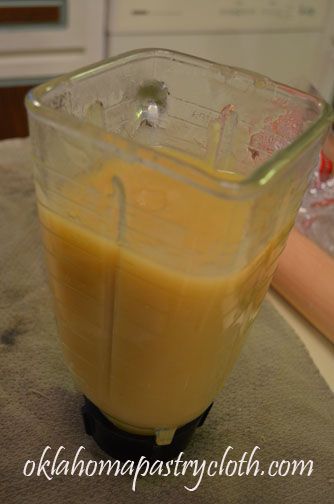 Pour about half of the pulp into a blender and puree. I have found that the blender is better over the food processor. The food processor does not necessarily remove all of the lumps and liquify like the blender. If, like our apples, the fruit is very sour, I use a little bit of Agave Nectar to cut the sourness. I checked to see if babies can have agave nectar and they can have small amounts. In order to keep the fruit from browning, I also add just a tad bit – about 1 tsp per pint – of fruit fresh or lemon juice. You can’t add much because the citric acid can upset babies tummy. 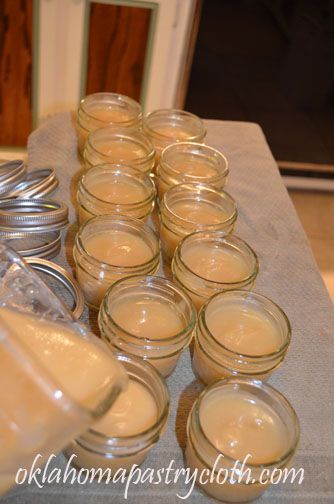 Pour the pureed fruit into 4 oz mason jars. I like the four oz because it is enough for two servings without the leftovers having to remain in the frig too long, gathering bacteria!! 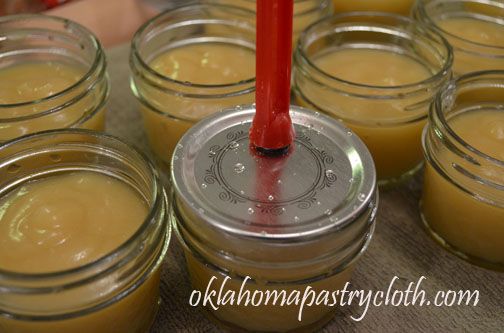 Wipe the rims of the jars with a warm, wet rag to remove any drips and place lids, which have been warming in hot water, onto the jars. Add rings and adjust. Waterbath jars submerged in warm water. Start timer for 15 minutes when water begins boiling. When timer goes off, remove jars to a towel on a table to cool. Listen for the “pop” of the lids sealing. Do not store any jars that have not sealed. Just use immediately. 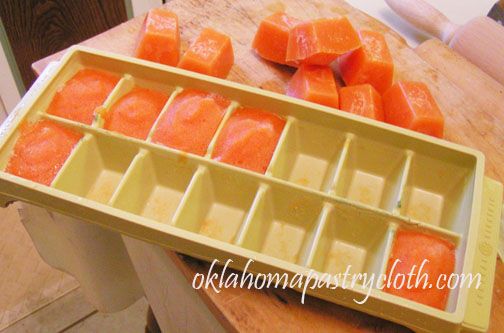 My daughter and I also freeze food for our Little Bit and ice trays really come in handy for that. Each section of a large ice tray holds roughly one ounce of pulp. The food is placed in the sections, frozen and then popped out like ice. 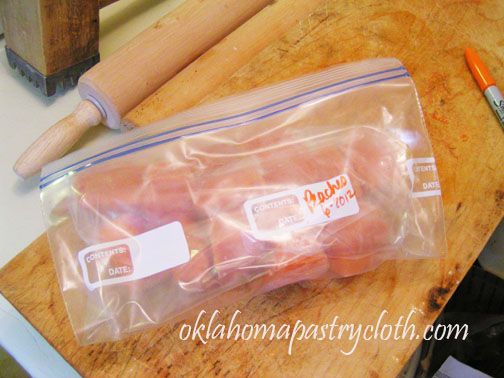 Storage in freezer bags or in FoodSaver bags works great in the freezer. To serve, just place cubes in a microwave-safe bowl and lightly microwave to thaw or place the cubes in a small jar and place the jar in hot water to thaw.  She may not be able to say, “Thank you” yet, but it isn’t required! Her smacking lips and smile say it all!!  |
|
|
Oklahoma Pastry Cloth™ Company on Facebook
|
|
 |
|
|
It’s 105º And Soup?!
Wednesday, June 27th, 2012
 The good news is that my meds seem to be working and I don’t feel like I’m burning up from the inside out, with the accompanying clammy persperation from a metabolism gone haywire. And my eyes are a teeny tiny better and that is awesome. Thank you so much for your kind words, thoughts and prayers. But the bad news is that it is 105º outside. There was a roadrunner on the drive, carrying a frilly, little parasol to beat off the heat as she looked for a lizard. OK. So, I’m exaggerating a little. It was actually just a tiny fan.  I have to tell you about my adventure with our little Ellie-dog, our long-haired mini dachshund, in this heat. I was driving on the interstate, after having made some deliveries, and Ellie went along for the ride. She was in the front seat, panting from the very hot day and trying to get comfortable, when all of a sudden she jumped down to the floor. I told her to get back into the seat, but she dove under the car seat to the crackling and rustling of paper and plastic wrap. Backing out of her hideout, she jumped into the seat with a stale, partially eaten, chocolate cupcake. Chocolate can be deadly to dogs and I knew it. Just to give background: A few weeks ago, in a moment of absolute insanity, I had purchased a packaged “Super Chocolate” cupcake from a huge pile on a table at the grocery store. The pile was so inviting to a person who is supposed to be totally abstaining from such things and besides, there was a big, big sign that declared, “SALE!!”. They were on sale. That’s a siren song to this coupon shopper. I had to have one. So I did. When I got to the car, I opened the package, took one bite and thought, “Bleh! That’s awful!!” and put it back into its plastic wrapping, intending to toss it in the trash. That was a sale down the drain. I don’t know if my separation from such things made that cupcake taste bad or if it was just a sorry product, but whatever, my picky tastebuds saved me from myself. I placed the wrapped cupcake in a small bag and put it on the floor of the car, where I promptly forgot about it. I must have stopped fast or something, because that little bag rolled under the seat where it went to live in a cupcake no-man’s land. That is, until Ellie found it. As soon as she had grabbed that cupcake, she jumped onto the seat cushions on the passenger’s side of the car while, at the same time, my hand shot out to grab her nose. Now, remember that I am on the interstate going 70 mph. Ellie was trying with all her might to wolf down her treasure before I could pry her mouth open. Driving with my left hand, I stuck two fingers of my right into the back of her jaw, opened her mouth and scooped out wads of slobbery cupcake as Ellie tried valiantly to grab it back along with my fingers. I yelped. Using the elbow of my left arm, with hand on the wheel, I managed to get the window open partway in order to toss the offending cupcake onto the highway. I figured that it was so slobbery that it would decompose and that wouldn’t be considered littering? I managed to hold Ellie’s collar in such a way that she could not move to grab the chocolate pieces that had broken off and scattered all over the seat. And I mean ALL over the seat. Instead of heading back to work, I made a detour to the vet and plopped my silly puppy onto the table, stating rather foolishly, “She ate a chocolate cupcake. Not all of it, but some of it and it said that it’s a Super Chocolate cupcake!” The vet dubbed her Cupcake Dog and did an exam, using the name frequently. He determined that she was just going to have a really bad tummy ache because – yes, we read the ingredients on the cupcake package – there wasn’t even enough chocolate to call it just a Regular Chocolate cupcake, much less Super Chocolate. False advertising indeed. And so, Ellie, Cupcake Dog, did fine and I bandaged my fingers where she had been unable to distinguish between them and globby cupcake. No harm done. Better for you than preservative-filled, pretend chocolate cupcakes are the veggies in your garden. You do have a garden, right?! If not, then start thinking about next year! If you are like me, your garden is coming in all at once right now. It makes an overwhelming task to deal with mountains of tomatoes, potatoes, corn and every other kind of vitamin-filled vegetable that show up at this time of year. At the request of a reader, who asked what other kind of soups I process that use potatoes, I thought I’d share a recipe that my friend Janis invented and shared with me a number of years ago. She serves it every cold, Halloween night to volunteers who help with her community project. Her method of making this soup is the “dump” method and the ingredients include the “kitchen sink” but I put together a batch and measured what I did so that I could pass that on to you. The nice thing about this soup is that it makes so much that you are able to can it in the pre-meat stage and then cook up your meat prior to serving so that it is fresh tasting and delicious. The recipe makes about 8 pints of base soup. Of course, you can make this large batch for a crowd and add your meat at the end, without worrying about canning it. So here you go: 6 – 8 cups fresh tomatoes that have been blanched, skinned and quartered or chopped. (You can use canned tomaotes if you do not have fresh, one can being Rotel tomatoes) 1 can chicken broth 1/2 to 1 jalapeno pepper diced (not needed if using Rotel tomatoes) 1/2 teaspoon baking soda 3 medium new potatoes chopped with skin left on 3 carrots, chopped 1 cup corn (frozen is fine) 1 cup green beans (frozen is fine) 1 cup fresh or frozen peas (optional) 1 large onion chopped 1 1/2 cup cooked pinto beans or kidney beans or a can of drained Ranch Style Beans 1 26 oz can of your favorite brand of spaghetti sauce – I like Hunts To Serve Soup (For 1 quart) 1/2 lb hamburger 3 cloves garlic salt and pepper 1/3 cup shell pasta 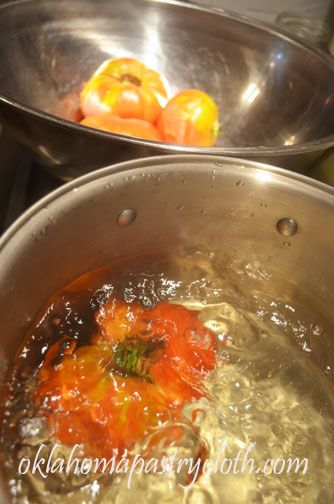 Drop tomatoes, whole, into boiling water and watch for the skins to split. Remove to ice water when the skins split. Slip skins off of tomatoes and quarter or dice tomatoes and place into a large stock pot. 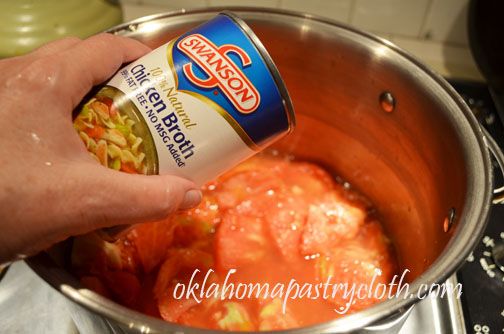 Add can of chicken stock to tomatoes and bring to a boil to stew. 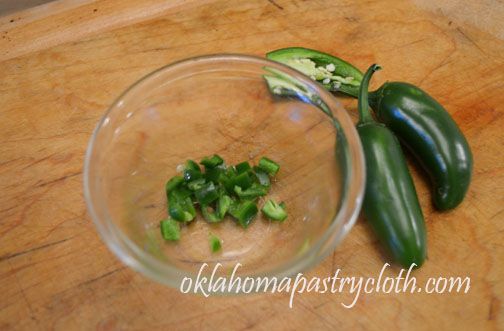 Add jalapeno 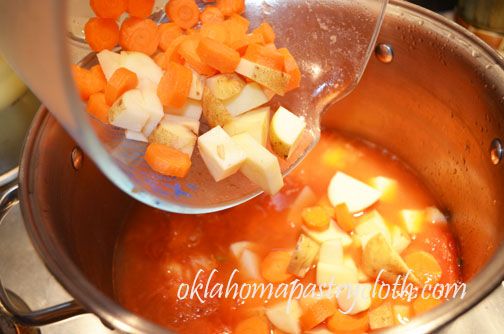 Add chopped new potatoes and carrots. Continue to boil until carrots are tender. 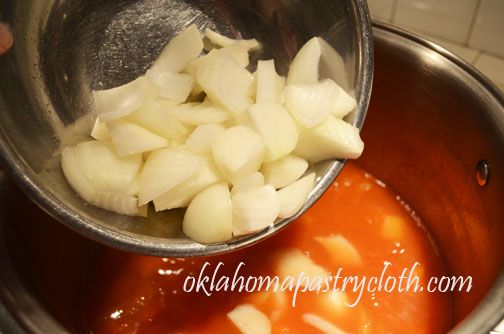 Add chopped onion 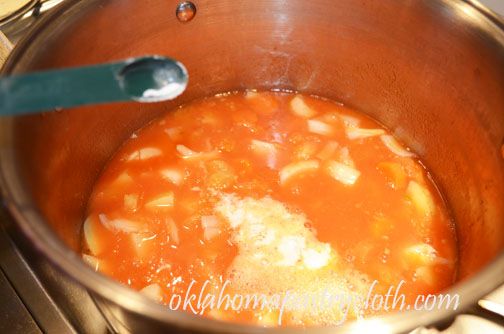 And just a little hint. When using fresh tomatoes and cooking them, often they have a slightly bitter taste. If you make spaghetti sauce or even juice from fresh tomatoes, this can be a problem. The solution is to add about 1/2 teaspoon of baking soda to the tomatoes as they cook. They will foam up like the top of a volcano! But this cuts the bitterness totally and gives a more smooth, nice taste. If using commercially canned tomatoes, this step can also be necessary. Note: Do not add soda if you are going to can tomatoes only, using the waterbath canning method. This cuts the acidity and reduces the safety of using waterbath canning. For this particular recipe, we will be pressure canning it, so reducing the acid will be fine. 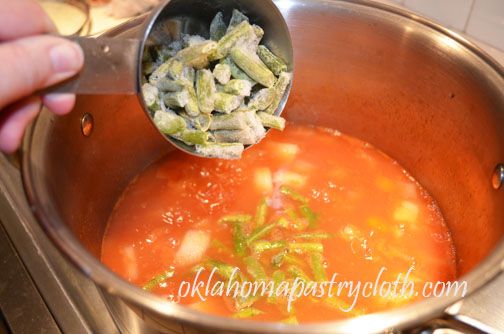 Add green beans, corn and peas (peas are optional). I am using frozen here, but fresh is great. 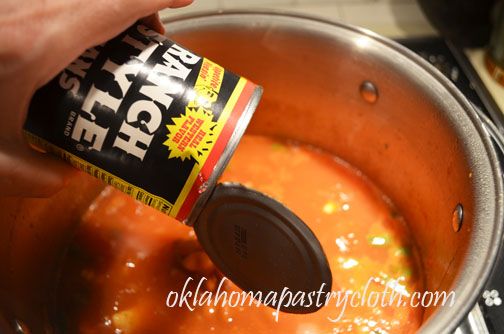 Add beans 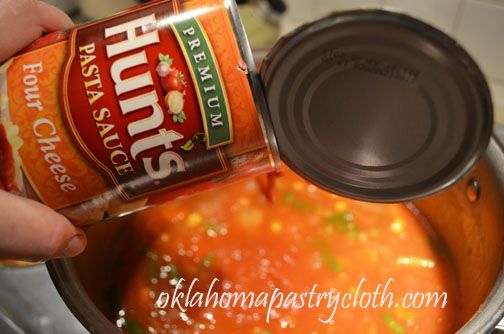 Add spaghetti sauce 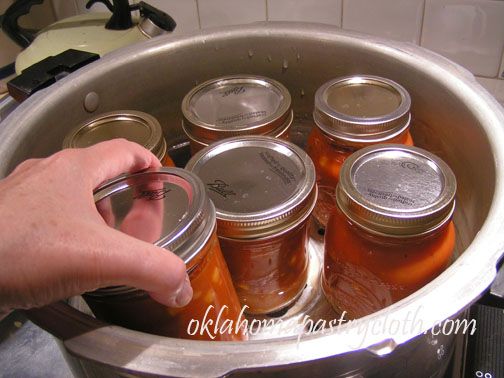 Put soup into jars, either pints or quarts, and process in a pressure canner on 10 lbs of pressure for 60 minutes for pints and 75 minutes for quarts. 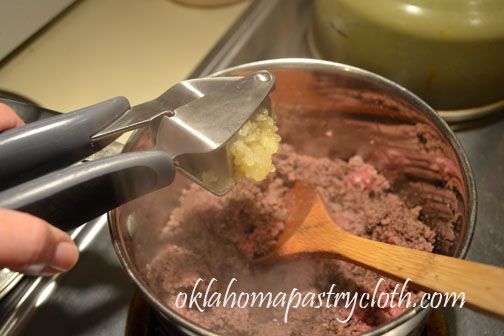 To serve, open a jar or two of the soup base and put into a deep pan. Add one cup of water for one quart of soup base. For 1 quart of soup, cook 1/2 lb of hamburger or ground chuck with 3 cloves of pressed garlic, salt and pepper, until browned. 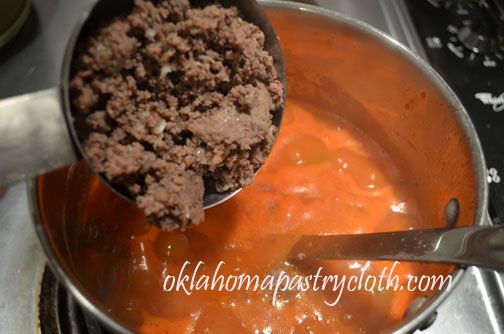 Add beef to the soup. I like to add pasta shells too. Boil until the pasta is tender and add more water as it cooks to thin if need be. 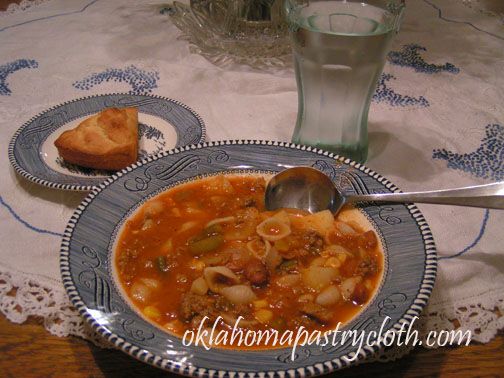 Serve hot with fresh cornbread. This is a wonderfully quick dinner on a cold, winter night. Also, just for information, this is great for camping. Dehydrated hamburger can be purchased at many hunting/camping stores, as well as at Costco. This meat can be rehydrated and cooked with the garlic and salt and pepper and then added to the soup. Great meal for around the campfire or when the electricity goes out!  |
|
|
Oklahoma Pastry Cloth™ Company on Facebook
|
|
 |
|
|
Canning A Refreshing Drink
Wednesday, June 6th, 2012
 Boy, do I love this time of year…I think. Everything is coming in at once – peaches, apricots, nectarines, raspberries, blueberries, potatoes. And all of these things have to be processed before they go bad. Waste not – want not!! God has been good to us Okies this year and what we are given, we must use!! It just means that the kitchen becomes our sole domicile for awhile, along with the heat and mess that includes. I am a messy cook. I DO wash dishes as I go, but it just seems that I can’t keep up with those dishes or the juices and goo that come from my various food sources. By the time I am finished, hard as I try, I’m still walking slower than usual as my shoe soles stick to the floor and I’m trying to reach gummy splatters on the walls two feet over my head, wondering how in the world they got there. And then of course, there’s my stupid choices of cooking utensils as happened with my first run of strawberry jam his year. I don’t ever seem to remember that I flunked the spacial perception test in the 8th grade. 1st Law of Jamming: Attempting to make jam in a pot that is too small always results in an overflow of thick, sticky jam onto the stove surface and under the stove top, down the front of the oven door and pooling in an oozing mess on the floor. 2nd Law of Jamming: The number of rolls of paper towels needed to clean up after making jam or jelly is directly proportional to the lack of spacial reasoning of the cook. It was with joy and relief that I was introduced to a recipe for my newly picked strawberries, by reader Margaret D., because it did not require boiling and the subsequent mess associated with such. She shared this amazing and refreshing fruit drink and of course I had to try it. Oh my. Delicious!! And what is so neat is that the drink is canned in jars to be used all summer, and even winter long! The process is easy – well, minus all the juicing required but if you have an electric juicer, no big deal – and the result is a concentrate that can be added to tonic water, ice water, Sprite or Ginger Ale. Here is her simple recipe: 6 cups hulled strawberries 4 cups freshly squeezed lemon juice (or lime juice) 6 cups granulated sugar Note: Blackberries or raspberries can be used for the fruit. Have a waterbath canner ready with warming water. Place lids into hot water to soften and have jars sanitized, warmed and ready. This recipe makes about 7 pints of mix. I did a combination of pints and half pints since there are only two of us. 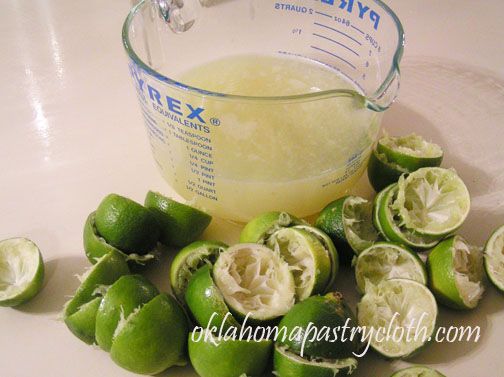 There’s an excellent opportunity for strengthening arms if one uses an antique juicer like I did!! If you have an electric juicer, congratulations! I made this recipe with lime juice because we love limeaids. 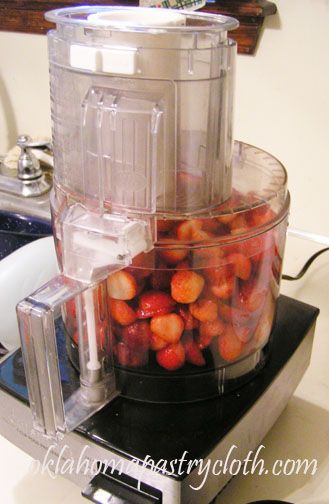 Puree the strawberries in a food processor or a blender. You CAN strain the juice of any strawberry seeds through cheesecloth if you are a hardworking and organized soul. I decided to live with the seeds!! 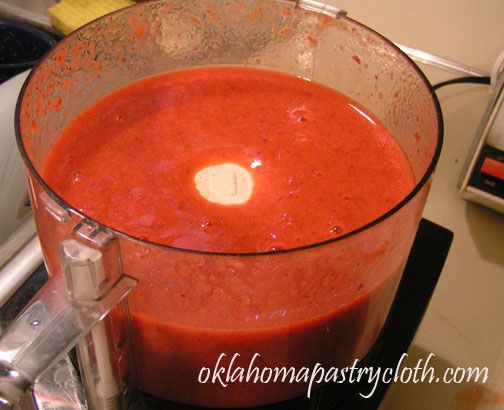 Liquify the berries.  Add sugar to the berries and stir until incorporated. I mixed everything in a large bowl and transferred to my pot, but you can mix directly into the pot if you like. 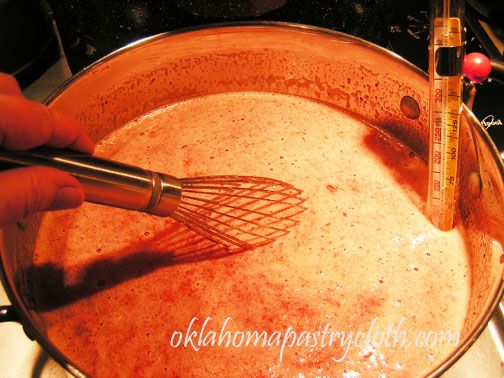 In a large stock pot, heat the mixture over medium-high heat. Using a candy thermometer, bring the liquid to 190º while stirring once in awhile. 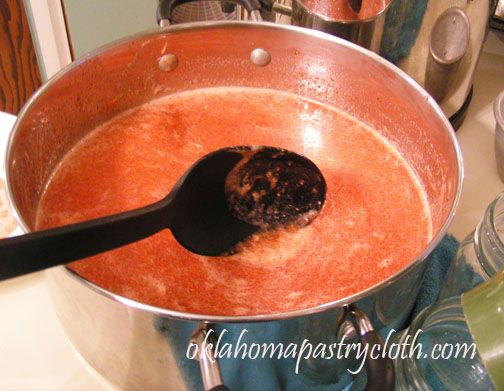 When heated to 190º, remove from heat and skim the froth off of the top. Just for info, I put the froth into a jar and threw that in the frig. Adding ice water to that made a wonderful drink! But removing the froth makes for prettier jars, especially if giving for gifts. 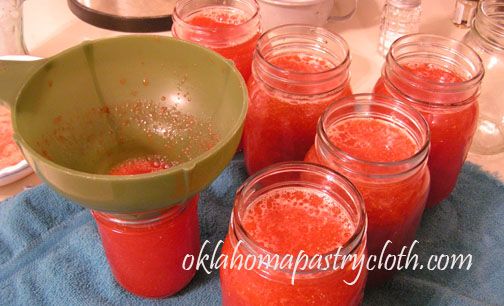 Pour hot liquid into jars  Wipe the rims of the jars of any drips with a warm, wet washcloth 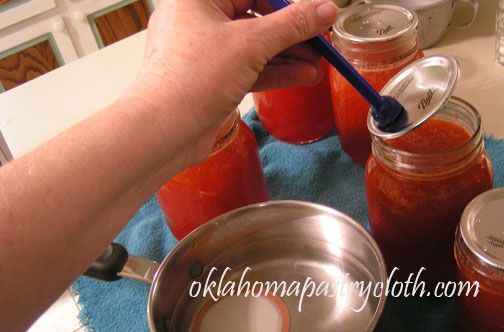 Place lids onto the jars and attach rings. Tighten and then back off slightly. Process in a waterbath for 15 minutes. Allow to stand and cool for 24 hours. Check seals. You can remove the rings and wash both jars and rings in soapy water to remove any residue. Replace rings when they are totally dry and the jars are totally dry. 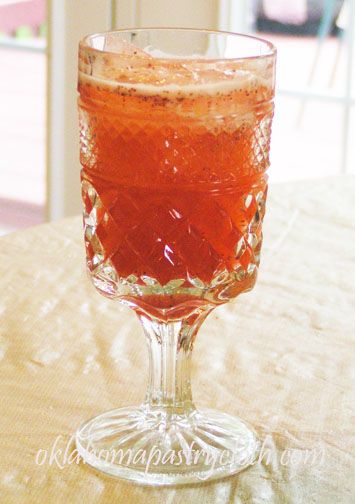 Reconstitute mix with equal parts of either ice water, tonic water, Sprite or Ginger Ale. Isn’t that a pretty drink? And so tasty too!! So thank you so much for sharing, Margaret!!  |
|
|
Oklahoma Pastry Cloth™ Company on Facebook
|
|
 |
|
|

 Homestead Revival
Homestead Revival Paratus Familia
Paratus Familia Rural Revolution
Rural Revolution